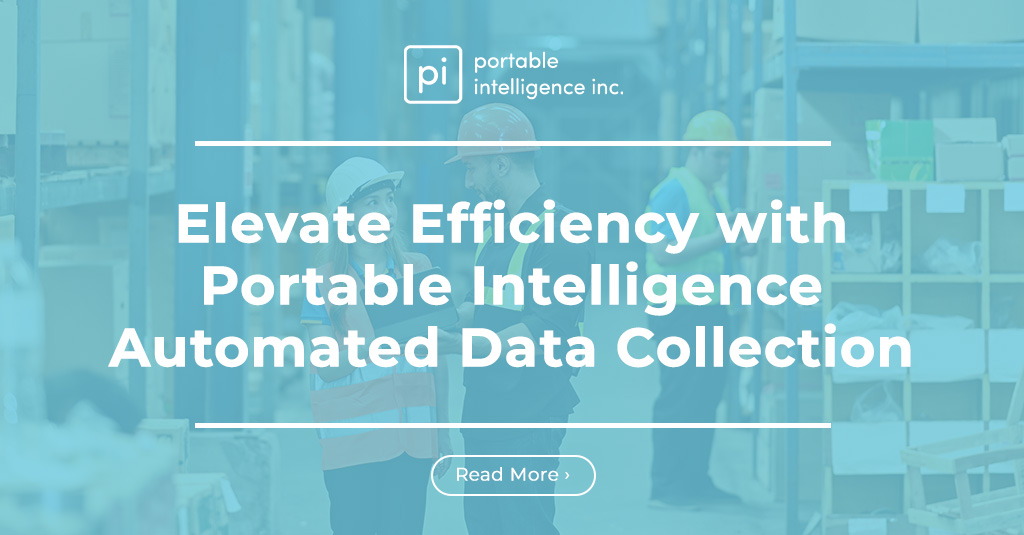In today’s fast-paced and interconnected world, efficient supply chain operations have become more critical than ever for businesses to stay competitive. With advancements in technology, the traditional concept of warehouses has evolved into a new era of smart warehouses, transforming the way goods are stored, managed, and shipped. In this blog post, we will delve into the key differences between smart warehouses and traditional warehouses, highlighting the advantages and revolutionizing potential of smart warehouse systems.
Understanding Traditional Warehouses
Traditional warehouses have long been the cornerstone of supply chain operations, serving as storage facilities for goods before distribution. These warehouses are typically characterized by manual processes and labor-intensive operations. Warehouse workers are responsible for tasks such as receiving, inventory management, order picking, packing, and shipping. While traditional warehouses have served businesses for many years, they come with inherent limitations and challenges.
One of the primary challenges of traditional warehouses is the reliance on manual labor. Human involvement in various tasks increases the likelihood of errors and inefficiencies. Manual inventory management processes, such as manually recording item counts and tracking stock movement, are prone to inaccuracies and can result in discrepancies between actual inventory and recorded stock levels.
Order fulfillment in traditional warehouses can be time-consuming and prone to errors. Warehouse workers manually pick items from shelves, pack them, and prepare them for shipping. These manual processes are susceptible to mistakes, leading to delays in order processing and potential customer dissatisfaction. Moreover, the lack of optimized routing and warehouse layout can cause inefficient movement within the warehouse, resulting in wasted time and effort.
Real-time visibility and control over inventory are often limited in traditional warehouses. Managers may struggle to have an accurate and up-to-date view of stock levels, leading to challenges in maintaining optimal inventory levels. This can result in stockouts, where products are out of stock when customers want to purchase them, or overstocking, where excess inventory ties up capital and increases carrying costs.
Additionally, traditional warehouses may face challenges in adapting to changing business needs and scaling operations. The infrastructure and layout of traditional warehouses are typically rigid, making it difficult to accommodate growth or changes in product assortments. Expanding storage capacity or introducing new processes may require significant time and resources.
Introduction to Smart Warehouses
The advent of smart warehouses represents a transformative leap in supply chain management. These warehouses embrace automation, advanced technologies, and data-driven processes to optimize efficiency, accuracy, and adaptability. By leveraging cutting-edge solutions, smart warehouses offer numerous benefits that address the limitations of traditional warehouses.
Smart warehouses integrate a range of technologies to streamline operations and enable intelligent decision-making. Automation plays a pivotal role, with robotics and machinery taking over repetitive and labor-intensive tasks. Robotic systems, such as automated guided vehicles (AGVs) and robotic arms, can handle tasks such as item picking, sorting, and even packaging. This automation reduces reliance on manual labor and enhances the speed and precision of warehouse operations.
The Internet of Things (IoT) devices form another essential component of smart warehouses. These interconnected devices, such as sensors and RFID tags, enable real-time tracking and monitoring of inventory. They provide accurate data on stock levels, location, and condition, allowing for proactive inventory management and minimizing the risk of stockouts or overstocking. IoT devices also contribute to optimizing warehouse space utilization by providing insights into storage availability and efficient placement of goods.
Data analytics is a key driver of smart warehouses, enabling data-driven decision-making and process optimization. Advanced analytics techniques, including machine learning and predictive algorithms, analyze vast amounts of data to forecast demand patterns, optimize inventory levels, and streamline order fulfillment processes. This data-driven approach minimizes errors, enhances forecasting accuracy, and reduces unnecessary costs associated with excess inventory or rushed shipments.
Smart warehouses also harness the power of artificial intelligence (AI) to enhance operational efficiency and responsiveness. AI-powered systems can dynamically allocate resources, such as labor and equipment, based on real-time demands and priorities. They can identify patterns in historical data to detect potential bottlenecks or optimize workflows, leading to improved overall performance. Moreover, AI-driven predictive maintenance systems can detect equipment malfunctions or maintenance requirements in advance, reducing downtime and ensuring continuous operation.
The flexibility and adaptability of smart warehouses are noteworthy advantages. Modular designs allow for easy expansion and reconfiguration, facilitating scalability as businesses grow or change. Smart warehouse systems can seamlessly integrate with other software platforms, such as enterprise resource planning (ERP) systems and transportation management systems (TMS), enabling end-to-end visibility and efficient data exchange across the supply chain.
Key Differences: Smart Warehouse vs. Traditional Warehouse
- Inventory Management: Smart warehouses revolutionize inventory management through real-time tracking and visibility. Automated systems, such as barcode scanners and RFID tags, enable accurate and efficient inventory control. With instant updates on stock levels and locations, businesses can make informed decisions to prevent stockouts or overstocking, improving customer satisfaction and reducing carrying costs.
- Order Fulfillment: Smart warehouses optimize order fulfillment processes through automation. Robotic systems and AGVs automate picking, packing, and sorting operations, significantly reducing processing time and errors. Optimized routing algorithms and advanced warehouse layouts further enhance efficiency, ensuring that orders are picked, packed, and shipped with precision and speed.
- Data Analytics and Optimization: Smart warehouses leverage data analytics to optimize operations. Advanced algorithms analyze historical data, customer trends, and market insights to forecast demand accurately. This enables businesses to optimize inventory levels, improve order accuracy, and streamline supply chain planning. Predictive maintenance systems identify equipment maintenance needs in advance, reducing downtime and maximizing operational efficiency.
- Scalability and Flexibility: Smart warehouses offer greater scalability and flexibility compared to traditional warehouses. Modular designs allow for easy expansion or reconfiguration to accommodate changing business needs. These warehouses can seamlessly integrate with other systems, such as ERP or TMS, enabling end-to-end visibility and smooth data exchange across the supply chain.
- Worker Safety and Ergonomics: Smart warehouses prioritize worker safety and ergonomics. Collaborative robots (cobots) work alongside human workers, reducing physical strain and improving safety. AI-powered safety systems can detect and prevent potential accidents. Overall, smart warehouses create safer working environments, improving employee well-being and productivity.
Challenges and Considerations in Implementing Smart Warehouses
While smart warehouses offer immense benefits, there are challenges and considerations to address during implementation:
- a. Cost of Implementation and ROI: Implementing smart warehouse technologies involves upfront investments. Businesses need to carefully evaluate the cost of equipment, software, infrastructure upgrades, and training. It’s essential to assess the expected return on investment (ROI) in terms of improved efficiency, cost savings, and competitive advantages.
- b. Workforce Reskilling and Change Management: Introducing automation and advanced technologies may require reskilling or upskilling the existing workforce. Change management strategies should be in place to ensure smooth transitions, address potential resistance, and empower employees to adapt to new roles and responsibilities.
- c. Cybersecurity and Data Protection: Smart warehouses rely on interconnected systems, making cybersecurity crucial. Robust security measures and protocols must be implemented to safeguard sensitive data, protect against cyber threats, and ensure compliance with privacy regulations.
- d. Integration with Existing Infrastructure: Integrating smart warehouse systems with existing infrastructure, such as legacy software or equipment, can present challenges. Compatibility, data synchronization, and smooth integration should be carefully planned to ensure seamless operations and avoid disruptions.
The evolution from traditional warehouses to smart warehouses represents a remarkable transformation in supply chain management. Smart warehouses leverage automation, advanced technologies, and data-driven processes to optimize efficiency, accuracy, and adaptability. By embracing the advantages offered by these cutting-edge solutions, businesses can revolutionize their supply chain operations and gain a competitive edge in the market.
The key differences between smart warehouses and traditional warehouses are significant. Smart warehouses enable real-time tracking and visibility, automate inventory management, streamline order fulfillment processes, leverage data analytics for optimization, offer scalability and flexibility, and prioritize worker safety and ergonomics. These features address the limitations of traditional warehouses, enhancing operational efficiency, accuracy, and responsiveness.
Implementing smart warehouses does come with challenges and considerations. Businesses need to carefully evaluate the cost of implementation and assess the expected return on investment. Workforce reskilling and change management strategies should be implemented to empower employees and navigate the transition successfully. Robust cybersecurity measures are essential to protect sensitive data, and seamless integration with existing infrastructure is crucial for efficient operations.
In conclusion, the rise of smart warehouses is revolutionizing the supply chain industry. By harnessing automation, data analytics, and advanced technologies, businesses can unlock new levels of efficiency, accuracy, and adaptability. Embracing smart warehouse solutions enables companies to meet the demands of today’s fast-paced and competitive market, enhance customer satisfaction, and drive sustainable growth. As the future unfolds, smart warehouses will continue to shape the supply chain landscape, propelling businesses towards greater success.





